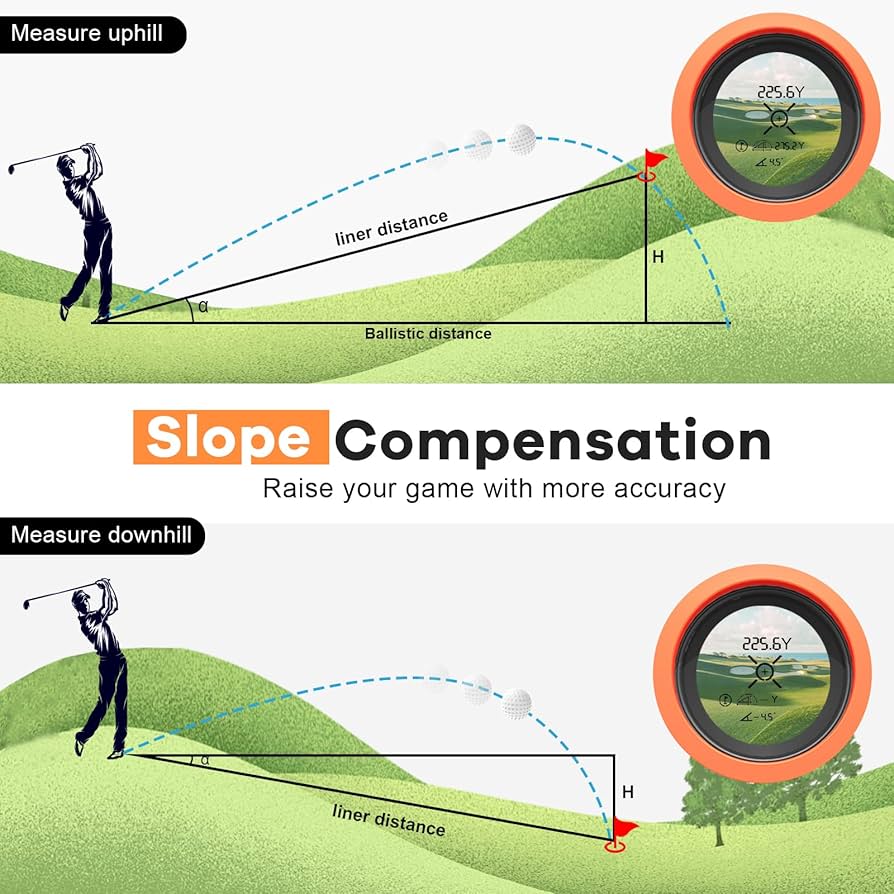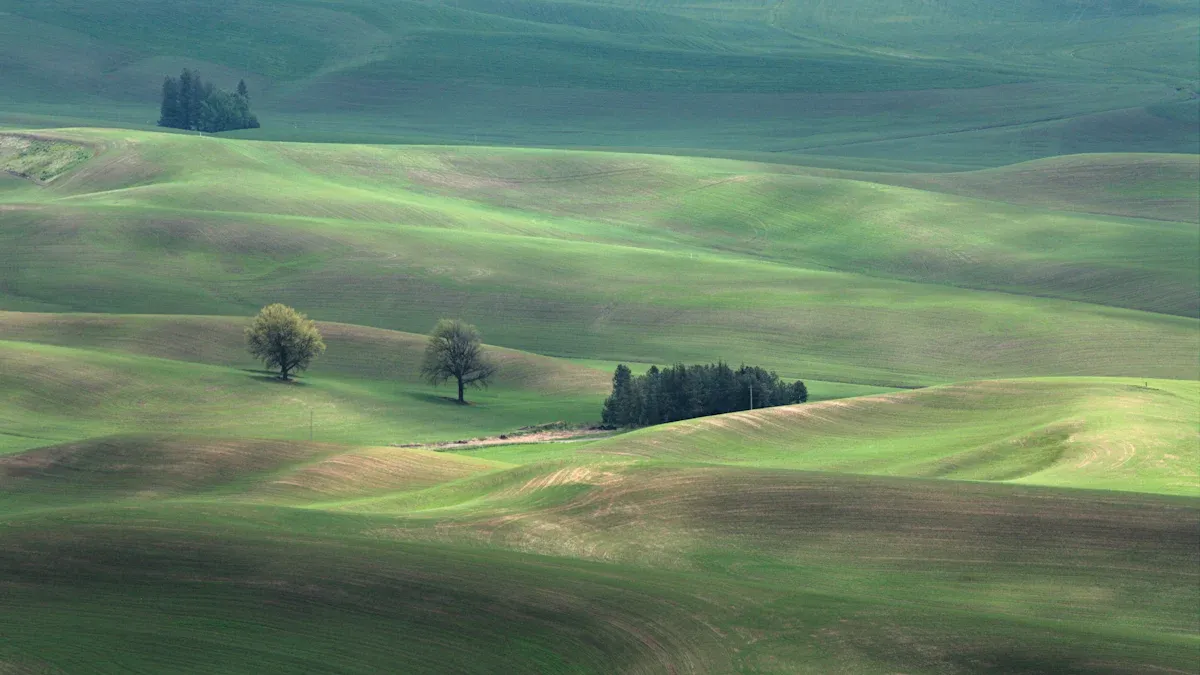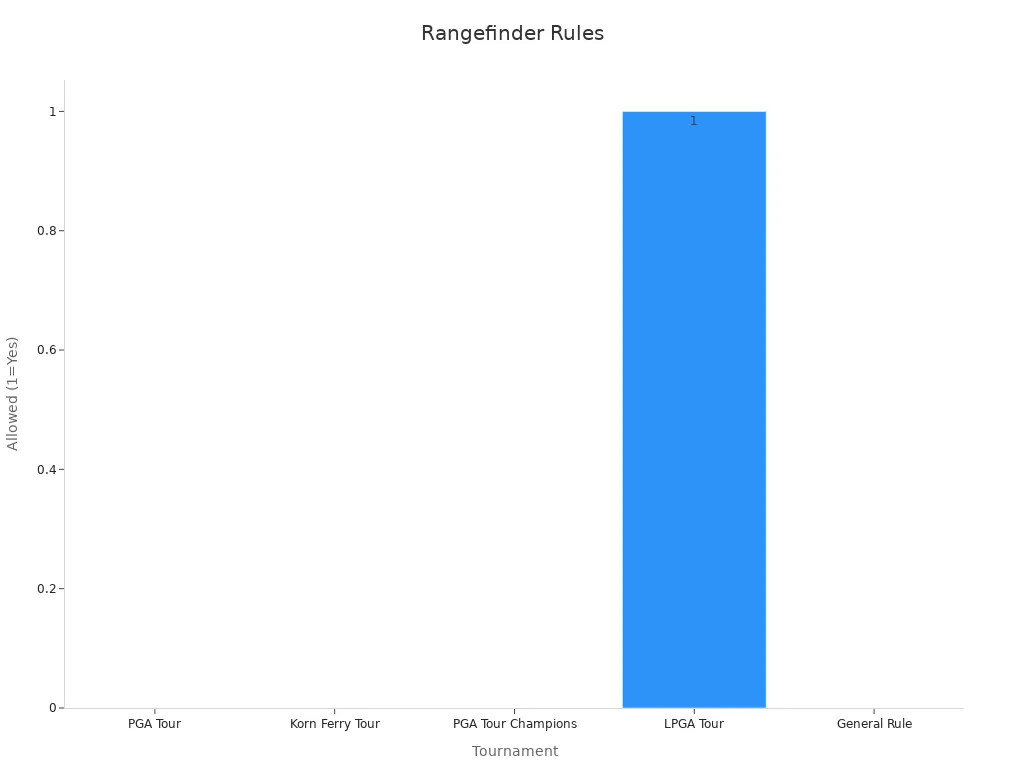What is slope in golf rangefinders
Share

When playing golf, hills can make judging distance hard. This is why slope in a rangefinder is helpful. Slope changes distance readings by including the angle of the land. It works for both uphill and downhill shots. With this feature, you get accurate readings that include elevation. This helps you pick the right club and plan your shot. For example, a target on a steep hill may look farther. Slope adjustments fix this, giving you correct distance measurements.
Key Takeaways
Slope in a rangefinder changes distance based on ground angle. This helps golfers pick the right club.
The slope feature makes uphill and downhill shots more accurate. It also helps with confidence and planning.
Rangefinders with slope can't be used in tournaments unless turned off. Always check the rules first.
Pick a rangefinder that works for you. Look for slope switches, good battery life, and clear displays.
Slope adjustments help both new and skilled golfers. It makes playing easier and more fun.
Understanding Slope on a Rangefinder
What is slope in a rangefinder?
Slope in a rangefinder means it adjusts distances. It does this by including the angle of the ground. This makes the distance more accurate for hills or slopes. For example, if your target is uphill, the rangefinder changes the distance. This helps you choose the right club and plan better shots.
In golf, hills can change how far a shot feels. Without slope, you might pick the wrong club. A rangefinder with slope shows the real distance. This improves your aim and boosts your confidence during play.
How slope measurements work
The role of optical technology
Modern rangefinders use special technology to measure slope. They send lasers to find the distance to your target. The laser reflects back, and the device calculates distances. Some rangefinders also use GPS to add elevation data for better accuracy.
Trigonometric calculations and angle adjustments
Slope uses math to adjust distances. The rangefinder measures the angle of the hill. Then, it uses formulas to change the distance reading. For example, if your target is on a hill, it adjusts for the incline. This shows the real effort needed to hit the target, whether uphill or downhill.
Real-world examples of slope in golf
Slope features are very helpful in golf. Devices like the Cobalt Q4 Rangefinder use tools to measure true distances. This helps you pick the right club and hit better shots. Some devices also block distractions for clearer readings. On hilly courses, slope measurements help you make smarter choices, improving your game.
The Importance of Slope for Golfers

Angle compensation for elevation changes
Golf courses with hills make judging distance tricky. A rangefinder with slope adjusts for uphill or downhill angles. This gives you accurate measurements for better shots. Without slope, you might misjudge how much effort is needed. Uphill shots need more power, while downhill shots need less. Slope calculations help you decide confidently.
Pro golfers change their swings based on the terrain. They swing faster and adjust their angles for uphill shots. These changes improve how the ball flies and lands. With slope in your rangefinder, you can make similar adjustments, even if you're not a pro.
Enhancing accuracy and shot selection
Slope improves accuracy by adjusting distances for hills. This helps you pick the right club and plan smarter shots. For steep uphill holes, it prevents underestimating the shot. For downhill holes, it stops you from overshooting the target.
Golfers of all levels benefit from slope features. Beginners often struggle with uneven ground. Slope makes judging distance easier and builds confidence. Intermediate and advanced players use slope to improve strategies and make precise shots.
Benefits for golfers of all skill levels
Slope isn't just for pros—it helps everyone play better. Beginners get accurate readings, reducing guesswork. Intermediate players refine their club choices and plans. Advanced golfers use slope to perfect swings and handle tough terrain.
Studies show pros adjust their swing angle more than amateurs. For a 30-meter height change, pros adjust by 3.3°, while amateurs only adjust by 1°. Slope features help close this gap. Using a rangefinder with slope improves accuracy and decision-making for all golfers.
Legal and Practical Considerations for Slope
Are slope-enabled rangefinders allowed in tournaments?
USGA and R&A rules on slope
Rangefinders with slope are not always allowed in tournaments. The USGA says the slope feature must be turned off during events. This keeps the game fair since slope gives an advantage by adjusting for hills. The R&A has similar rules, letting players use slope rangefinders only if the feature is disabled.
Here’s a quick look at tournament rules:
Tournament Name |
Slope-Enabled Rangefinder Use |
|---|---|
PGA Championship |
Allowed |
KPMG Women’s PGA Championship |
Allowed |
KitchenAid Senior PGA Championship |
Allowed |
Other Tournaments |
Not Allowed |
Disabling slope during competitions
To follow tournament rules, turn off the slope feature on your rangefinder. Many devices, like the Gogogo Sport Vpro GS24, have a switch for this. This lets you use the rangefinder legally while still measuring distances normally.
When to use slope-enabled rangefinders
Slope rangefinders are great for practice or casual games. They show how hills affect your shots. For example, a laser rangefinder with slope calculates the adjusted distance. This helps you know how much power to use. Try them on hilly courses to improve your skills and accuracy.
Advancements in slope technology and toggle features
Modern slope rangefinders have cool features like real-time distance and angle adjustments. Devices like the Gogogo Sport Vpro GS03 work in bad weather, like rain or fog. These features let you easily switch between slope and regular modes. This makes them useful for both fun games and tournaments.

Choosing a Rangefinder with Slope
Key features to consider
When picking a rangefinder with slope, focus on helpful features. Choose one that gives quick and accurate distance readings. A bright and clear screen is important for sunny days. Some rangefinders have zoom, making it easier to see targets.
Battery life matters too. A strong battery keeps it working all game. Waterproof designs are useful for rainy weather. Check if it has a slope switch. This lets you turn off slope mode during tournaments.
Tip: Try the rangefinder before buying. Make sure it’s easy to hold and simple to use.
Popular models with slope functionality
Some rangefinders with slope are very popular. The Bushnell Tour V5 Shift is loved by many golfers. It gives accurate distances and has a slope switch for tournaments. The Garmin Approach Z82 uses GPS and lasers for exact readings. It even shows a map of the hole on its screen.
For a cheaper choice, try the Gogogo Sport Vpro GS24. It gives good distance readings and slope adjustments at a low price. These models work well for beginners and experienced players alike.
Balancing cost, features, and personal preferences
Choosing the right rangefinder means thinking about cost, features, and your needs. If you play for fun, a simple model with slope might be enough. Competitive players may want advanced features like GPS or vibration alerts.
Set a budget before shopping. Compare models to find the best deal. Think about how often you play and where. A rangefinder with slope can improve your game, but it should match your style and needs.
Using a rangefinder with slope can improve your golf skills. It makes distance readings more accurate by adjusting for hills. This helps you choose better shots and boosts your confidence. Both beginners and experienced players benefit from this feature.
Note: Check tournament rules before using a rangefinder with slope. Many tournaments require turning off the slope feature for fairness.
Pick a rangefinder based on your budget and playing style. Look for features like slope switches, long battery life, and clear screens. The right rangefinder will fit your needs and make golf more fun.
FAQ
What does the slope feature do in a golf rangefinder?
The slope feature changes distance readings by including elevation. It calculates if the ground is uphill or downhill. Then, it adjusts the distance for accuracy. This helps you pick the right club and hit better shots.
Can you use a slope-enabled rangefinder in tournaments?
You can use a rangefinder with slope in tournaments only if the feature is off. Most tournaments follow rules from USGA and R&A. These rules don’t allow slope adjustments during play. Look for a switch on your device to turn off slope.
Tip: Always check tournament rules before using your rangefinder.
How do you turn off the slope feature?
Most rangefinders with slope have a button or switch to disable it. Check the manual for instructions on how to turn it off. Turning off slope lets you follow tournament rules while still measuring distances.
Is a rangefinder with slope worth it for beginners?
Yes, it is! Slope helps new players understand how hills affect shots. It gives accurate readings and reduces guessing. This builds confidence and improves skills, especially on hilly courses.
What is the difference between slope and non-slope rangefinders?
Rangefinders with slope adjust for hills, while non-slope ones don’t. Slope models are great for practice or casual games. Non-slope devices are better for tournaments where slope isn’t allowed.
Note: Pick a rangefinder based on your needs and playing style.
